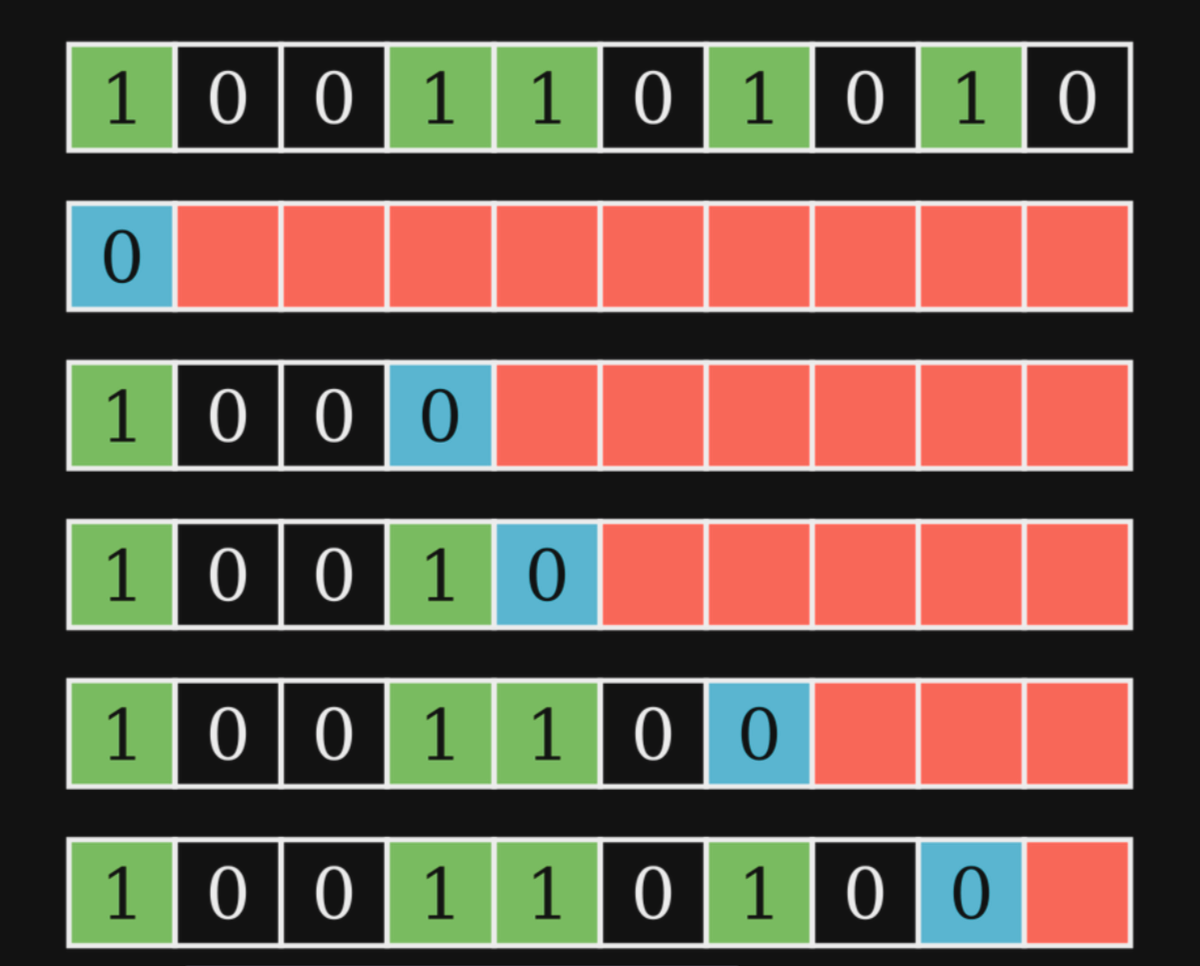LIS using Trie
Consider the famous problem of finding the length of the Longest Increasing Subsequence of an array.
You might be familiar with the classical DP approach :
is the length of the LIS ending at index .
The time complexity of this DP is
is the smallest element at which an increasing subsequence of length ends.
The time complexity of this DP is also
There’s yet another DP definition, and this is by far the easiest one. :
is the length of the LIS ending at value .
This DP is also
These are the only possible ways I could find on the internet to solve LIS. In this tutorial, I will share a unique and novel approach to find the length of the LIS using a Trie, that can be implemented in just 10-15 lines of code.
Let’s start with this DP definition:
is the length of the LIS ending at value .
If you append an element
Hence, to optimize it, you need a data structure that can support prefix maximas while also supporting updates. You can definitely use a segment tree, but it’s possible to build such a data structure using a Binary Trie.
 Suppose all elements of the array can be represented via 4 bits. Consider a perfect binary tree on 4 levels where all levels are filled. Let’s color the left child in blue, and assign it a value of 0 and the right child in green and assign it a value of 1.
Suppose all elements of the array can be represented via 4 bits. Consider a perfect binary tree on 4 levels where all levels are filled. Let’s color the left child in blue, and assign it a value of 0 and the right child in green and assign it a value of 1.
Then, notice that any number that can be represented using 4 bits can be found in this tree if you start from the root and traverse downwards. What’s more? Traversal of the leaves from left to right would result in a sorted sequence.
Let’s try to apply Tree DP. Each leaf stores
Next, consider the binary representation of any number. What do numbers that are smaller than it look like?

If
How do we traverse this tree to make sure we only visit smaller leaves? Notice the the point of divergence cannot be at an unset bit, therefore, as long as we encounter an unset bit in
But while implementing the idea, we don’t actually need to create a perfect binary tree. If there at most
int query(int x) {
int p = 1, ans = 0;
for (int i = lg - 1; i >= 0; i--) {
int bit = get_bit(x, i);
if (bit) {
int lchild = child[p][0];
ans = max(ans, dp[lchild]);
}
p = child[p][bit];
}
return ans;
}
Congrats, you just created a data structure that can answer prefix maximas in
Once you update a leaf, notice that the only DP values that can possibly change are the ones on the path from root to this leaf. Since the height of the tree is
But for the LIS problem, the updates are very specific. Notice that the value at a leaf can only increase or remain the same. Therefore, we don’t even need to walk up the tree to recompute the DP value. We can simply do it on our downward path while locating the leaf.
void insert(int x, int val) {
int p = 1;
for (int i = lg - 1; i >= 0; i--) {
int bit = get_bit(x, i);
if (!child[p][bit]) {
child[p][bit] = ++sz;
}
p = child[p][bit];
dp[p] = max(dp[p], val);
}
}
And that is it, we have a data structure that can support prefix maximas and point updates in
void solve(vector<int> &a) {
int n = a.size();
int ans = 0;
for (int i = 0; i < n; i++) {
int dp_val = 1 + query(a[i]);
insert(a[i], dp_val);
ans = max(ans, dp_val);
}
cout << ans << "\n";
}
You can submit your code on CSES : LIS